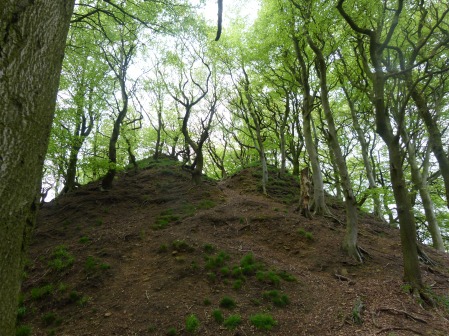
The lunatic fringe, or at least this diminutive portion of it, is feeling quite pleased with itself tonight. For a goodly while Stuart and I have been banging on about the possibility of motte and bailey castles being something other… and older… than the Norman constructions they are generally dismissed as being.
Our idea was based solely on looking at the landscape and basic human nature. We know that prehistoric man built mounds. You cannot, for example, miss Silbury Hill or dismiss Maiden Castle. We know they built barrows… small mounds for burials… and shifted huge quantities of earth to create the ditches and embankments we know as henges. Where ever we have found a ‘motte and bailey’ in proximity to prehistoric sites, we have had to wonder whether the incoming invaders had not simply made use of what was already there.

Why waste time and labour to build what already exists, we thought? Why build a ‘castle’ on a mound whose top is too small for a castle? Why build one at all when there is a beautifully defensible crag not a hundred yards away? And what better way of stamping your new authority on the landscape and its people than to take over its most prominent, and possibly sacred, place? That’s exactly what the ‘new’ Christian religion did when it arrived to evangelise the country. And the Romans. Why not the Normans? Maybe, we thought, at least some of the motte and baileys are much older than we think…
Mind you, that’s exactly the kind of woolly thinking that gets us relegated to the ‘lunatic fringe’ in the first place.

Except…
I’ve been following the Round Mounds project’s blog with some interest over the past year or so. They are about as far from the lunatic fringe as you can get. They are respectable scientists. They have been investigating a number of sites and the results are now in from the core samples taken at Skipsea Castle.
The castle was constructed upon its mound by Drogo de la Beauvrière, between 1071 and 1086. It was assumed that the motte dated to this time. The core samples show otherwise and date the construction of the mound to the mid Iron Age, around fifteen hundred years before the Norman castle. There are huge earthworks surrounding the site…and you have to wonder now when they might date from.
The scientists are justifiably excited. I have to say that tonight, they are not on their own.



